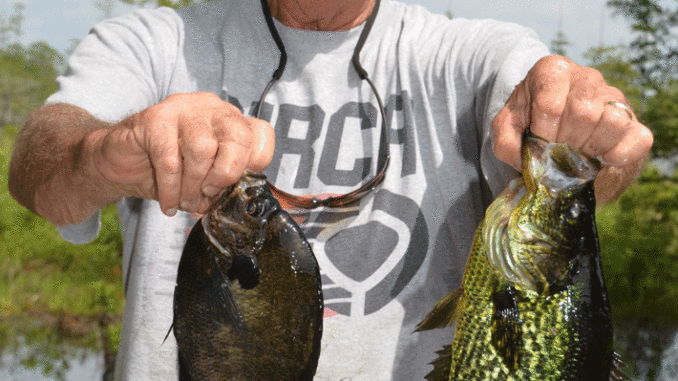
Soon after the clock strikes midnight on New Year’s Eve, many Americans jot down resolutions intended to improve their lives and reach personal and business goals. January is a perfect month to jump-start a continual improvement process for pond owners and managers. As stewards of mother earth, farm pond anglers with control over their impoundments can drastically improve their successes on the water, following a list of action items conducted throughout the year. Pond anglers can follow the same resolution methods during the dawn of the New Year concentrating on each of the critical facets of pond management.
Depending on the landowner’s goals, fisheries can be tailored to produce trophy size, high volumes or a combination of both. Since pond owners have varied size and species targets, this new series will attempt to provide general recommendations to improve the chemical, biological, and physical framework irrespective of the specific fishery goals of landowners. The Grow Big Fish Management Series will cover the most important aspects of pond management to help assist landowners and land managers in reaching their management goals.
Even though most ponds have hydraulic input from upstream or adjacent drainage areas, ponds are still considered closed systems allowing managers the ability to control the chemical, physical, and biological framework. Topics covered in this series will provide tools for reaching fishery objectives and to improve angler satisfaction.
It’s Test Time
Ponds can be the prized acreage or the wasteland of a landowner’s tract. Either a trophy bass pond or just a medium for producing mosquitos, the outcome is greatly influenced by the chemical composition of the water and its underlying bottom sediments. The chemical composition should be monitored routinely to develop the adequate chemical corrections throughout the year.
Many factors affect the chemical composition of ponds, and these levels constantly change through the year from a wide array of sources, including: native soil leaching, nutrient/chemical transport from neighboring environments, aquatic vegetation, algal consumptions and excretions, as well as fish themselves.
The chemical composition controls primary productivity of these ecosystems otherwise known as phytoplankton. These microscopic critters are the foundation that fuels the food chain in ponds. Additionally, cover, dissolved oxygen and reproductive ability are directly affected by the chemical composition of pond water and its bottom sediments as well.
Chemical amendments should be routine maintenance and part of any pond management program. However, before any nutrients can be added, the pH must be corrected. Primary producers require a preferred pH range in order to benefit from fertilizer applications. In most cases, ponds are acidic, and limestone should be added to raise the pH to levels between 6.5 and 9. However, lime applications take significant time to change the pH and should be conducted before nutrient amendments.
Fertilizer treatments and pH balancing will be an ongoing battle in ponds and will require routine monitoring to ensure proper balance throughout the year. Before applying limestone, soil samples taken from the bottom should be collected from a dozen locations scattered around the pond. They should be dried, blended together and submitted to a testing facility (extension service) to determine the amount of limestone needed to correct water chemistry.
Even though most ponds require similar chemical amendments, testing is encouraged to provide landowners with a specific prescription tailored to their pond.




Be the first to comment